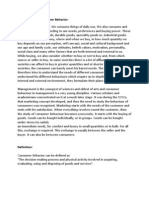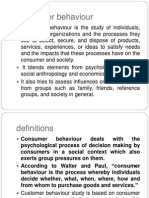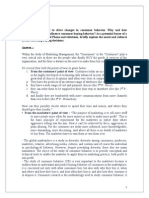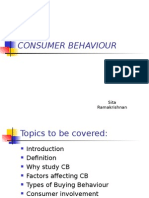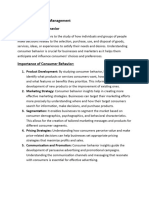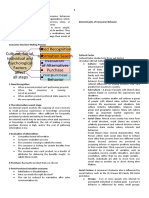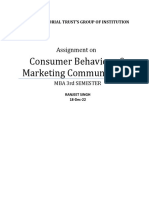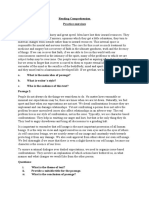0% found this document useful (0 votes)
13 views5 pagesUnit 1
Consumer behavior is the process through which individuals decide on the purchase of goods and services, influenced by various factors including psychological, social, personal, and economic elements. Understanding consumer behavior is crucial for marketers to develop effective strategies and meet consumer needs, preferences, and expectations in a competitive market. The field has grown due to its interdisciplinary nature, drawing from psychology, sociology, and economics to analyze consumer decision-making processes.
Uploaded by
mansee manralCopyright
© © All Rights Reserved
We take content rights seriously. If you suspect this is your content, claim it here.
Available Formats
Download as PDF, TXT or read online on Scribd
0% found this document useful (0 votes)
13 views5 pagesUnit 1
Consumer behavior is the process through which individuals decide on the purchase of goods and services, influenced by various factors including psychological, social, personal, and economic elements. Understanding consumer behavior is crucial for marketers to develop effective strategies and meet consumer needs, preferences, and expectations in a competitive market. The field has grown due to its interdisciplinary nature, drawing from psychology, sociology, and economics to analyze consumer decision-making processes.
Uploaded by
mansee manralCopyright
© © All Rights Reserved
We take content rights seriously. If you suspect this is your content, claim it here.
Available Formats
Download as PDF, TXT or read online on Scribd
/ 5









